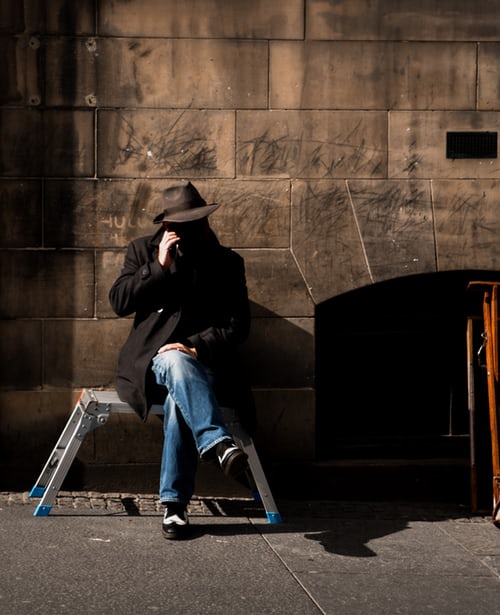
Anticipation to anxiety: Catching the wave of post-Covid life
Listen + Learn Research recently undertook a study on how the pandemic has changed people's habits and behaviours. They share some of their findings with us and look at how brands can respond.
The door to life is re-opening. Lockdown is ending, and we are being asked to go back to normal.
But the pandemic changed our habits, our behaviours and our perceptions. So how do people feel as they head back out in the world, and what can brands do to be a meaningful part of it?
Because we know people don’t talk to researchers in the same way they speak to each other, we looked to social for answers.
What did we find? The way people are reacting to post-pandemic life lies along a continuum, reflecting how we all experienced a different Covid. Some of us never we left untouched, while others suffered. Some businesses thrived, others collapsed.
We discovered a continuum of feelings online, from excitement to anxiousness, that come to life across three main personal contexts:
- Their perception of themselves,
- Their thoughts about their friends and family, and
- Their views about the wider world.
To illustrate how excitement and anxiousness play out in these contexts, let us introduce you to six people who embody the conversations we read online.
Me, myself and I

Pandemic Pam
Like many, Pandemic Pam feels a sense of panic, worry and gloom over Covid. Pam lost people close to her, and home-schooling left her drained.
She doesn’t want to go back to normal. She prefers the pandemic version of herself where life is less pressured. She also noticed positive changes as her family spent more time together. Her husband, who commuted long hours to London before, is more involved with the kids. Now his work wants him back, and it seems too much too soon.
Brands can speak to Pandemic Pam by creating experiences that respect her perspective and hesitancy. She needs to hear that others feel the same.

Eager Ed
Others, like Eager Ed, can’t wait for a more spontaneous and fulfilling existence. No more blur of every day being the same!
Eager Ed’s wife had their first baby during the pandemic. He can’t wait to strap on the Baby Björn and show his little girl the world! Ed is also planning a celebration for the couple’s seventh wedding anniversary. He can’t wait for a proper Saturday night – not a zoom call dressed up as fun.
How can brands speak to Eager Ed? Any message that captures the joy, spontaneity and freedom of post-pandemic life will do.
Family and friends
Post-Covid life evokes stronger feelings when it involves reconnecting with family and friends. Some are eager, while others are anxious and feel ill-prepared to re-join the social merry-go-round.

Killjoy Karen
Killjoy Karen is struggling to come out of her shell.
After coaxing, she agreed to meet her friend for lunch. But Karen worries about being around so many people. She makes up an excuse and sneaks out before more friends come to join. Karen hasn’t spoken to anyone in so long and is unsure what to talk about except Covid.
Brands can speak to Killjoy Karen by reassuring her it’s ok to feel the way she does. Karen needs to see a path forward, and brands can make her look ahead.

Digital Dad
In the other corner are those, like Digital Dad, who are downright jubilant and hungry for personal connections.
For the past 16 months, he has only spoken to his family via Zoom. He dreams of holding his grandkids and is planning a family holiday to Lisbon. Until then, he’ll be taking every opportunity to grab a pint at the pub with the fellas.
To appeal to Digital Dad, brands need to inform him what they are doing to keep him safe. But when he gets the green light, he is ready to dive back into life, see loved ones and his mates.
The Wider World
Post-Covid life also evokes strong feelings about returning to the broader world without the comfort of family and friends.

Nervous Naomi
Many, like Nervous Naomi, find the return to the office overwhelming. She’s not confident the office is “Covid secure”, let alone the commute on the Tube.
She would much rather continue working from home. Her work-life balance is better now, and she feels more productive.
How can brands speak to Nervous Naomi? She needs endorsements touting the benefits of “work from home”, including flexibility and access to talent.

Happy Harrison
Some, like Happy Harrison, can’t wait to return to the office or school. He misses the camaraderie at his restaurant job and is looking forward to taking his life off pause. Harrison moved in with his parents during the pandemic but will move out at the first opportunity he can afford to pay rent.
How can brands speak to Happy Harrison? He doesn’t need encouragement to go back to work. Open the doors, keep it safe and, let him in!
What does this mean for brands?
The post-Covid wave is coming, and life is about to change again. By using empathetic and context-sensitive human analysis to examine over 1000 social media comments online, we know that one size will not fit all. Brands need to learn to talk to their audience. On one side, you’ve got people who are excited and on the other, a lot of anxious folks.
With change comes opportunity. Take advantage of the creative possibilities that come with this spectrum of attitudes.
To find out more about the different consumer groups’ responses to post-Covid life, download the report or watch the webinar here.
This interview was recorded via LinkedIn Live, if you prefer to view on LinkedIn, click the button below.
View InterviewSee related content
.png)
.png)




